Did you know that pedal kayaks have been gaining popularity among water sports enthusiasts? These innovative vessels offer a unique way to explore the waterways while getting a great workout. But here’s the burning question: are pedal kayaks faster than traditional paddle kayaks?
The short answer is Yes. The pedal system in a kayak allows for faster and more efficient propulsion compared to traditional paddling.
Pedaling a kayak primarily engages the larger leg muscles, which are generally stronger and can sustain effort for longer durations compared to the arm muscles used in paddling. This can result in less fatigue and higher speeds over longer distances in a pedal kayak.
Pedal kayaks let you keep moving with your legs, but in regular kayaks, you have to stop paddling to switch sides or adjust your paddle.
In this article, we’ll discuss how pedal propulsion works, what makes a kayak go faster, and how pedal kayaks compare in real life.
If pedal kayaks are really faster and more efficient, stick around! We’ll give you the real scoop to help you decide if they’re right for your next kayaking trip.
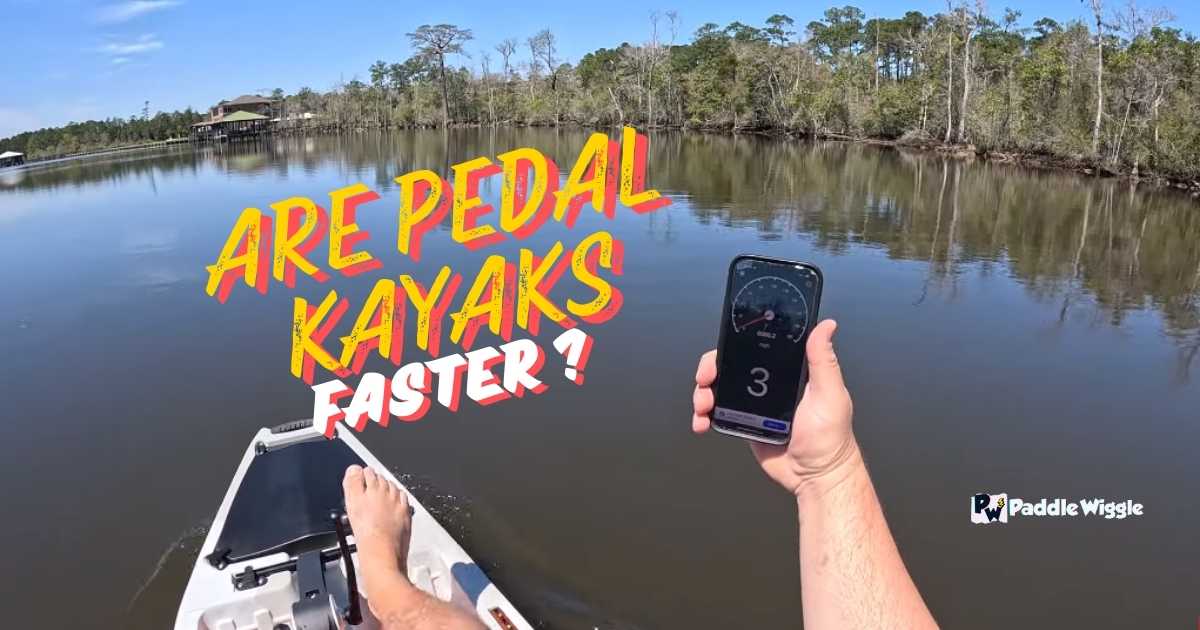
Contents
Comparing Speed Of Pedal vs. Paddle Kayaks
When it comes to speed, pedal kayaks have a clear advantage over traditional paddle kayaks. In real-world tests, pedal kayaks consistently outperformed their paddle counterparts. The push pedals in a pedal kayak provide efficient propulsion, allowing you to cover more distance in less time compared to paddling with a traditional kayak.
Several factors contribute to the speed difference between pedal and paddle kayaks. Firstly, the design of pedal kayaks is optimized for speed and efficiency. The streamlined hull and sleek shape reduce drag, enabling faster movement through the water. The placement of the pedals near the user’s feet allows for a more powerful leg-driven stroke, generating greater forward momentum.
Another important factor is the ability to maintain a constant rhythm while using push pedals. With paddling, there can be variations in stroke power and frequency, leading to inconsistencies in speed. In contrast, pedal kayaking provides a smooth and continuous motion that promotes a steady pace.


Efficiency Analysis
Pedal kayaks are more efficient than paddling kayaks when it comes to energy use. Pedaling with your legs takes less effort than paddling with a traditional paddle, so you can go farther without getting tired or straining your muscles.
Pedal kayaks are efficient because they use stronger leg muscles instead of just relying on arm strength. With your legs doing the work, you can make each stroke more powerful, which means you go faster and use less energy.
Plus, the design of pedal systems in kayaks makes sure that all your energy goes into moving forward. The pedals give you extra power, making your strokes more efficient and effective.
Hands-Free Advantage
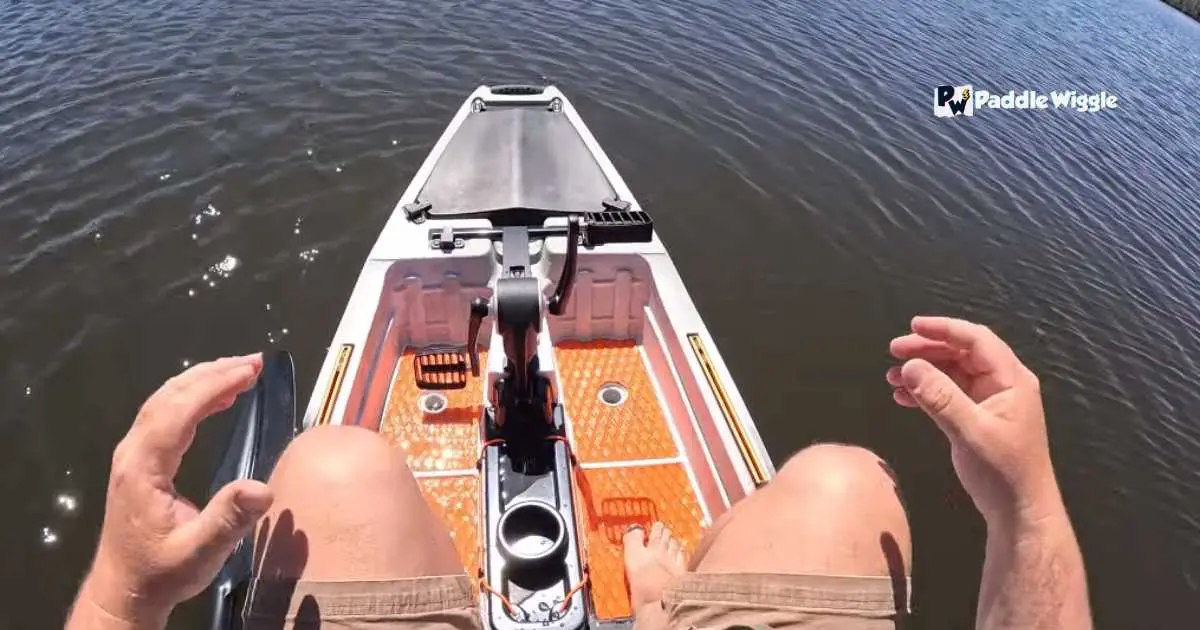

One major advantage of pedal kayaks is their hands-free operation. Unlike regular kayaks, which require constant paddle use, pedal kayaks allow you to keep your hands free for other activities, such as fishing or taking photos.
Being hands-free with a pedal kayak adds convenience and lets you multitask. Whether you’re casting your fishing line or capturing moments with your camera, having your hands available means you can fully engage in your activity without any interruptions.
Moreover, the hands-free feature of pedal kayaks enhances stability. With both hands-free, you can maintain better balance and control, especially in challenging conditions like rough waters or strong currents.
3 Advantages of Pedal Kayaks
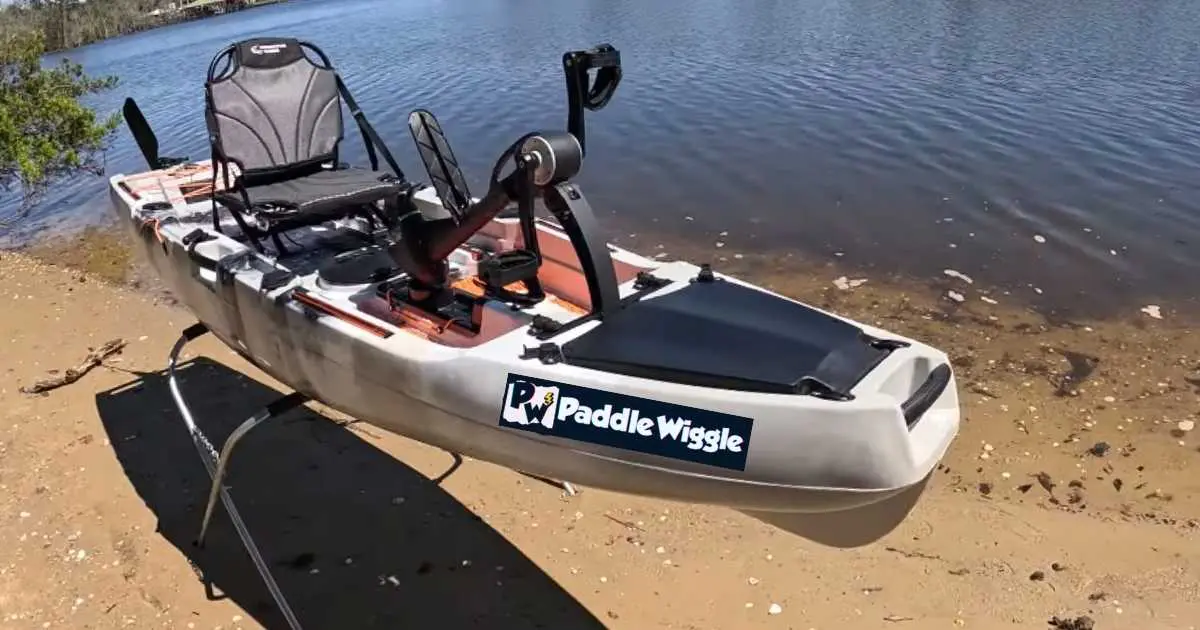

Pedal kayaks offer several advantages over traditional paddle kayaks. Whether you’re looking for convenience, efficiency, and enhanced performance they boost your enjoyment on the water.
Here are a few advantages of pedal kayaks:
Hands-Free Operation
One of the biggest advantages of pedal kayaks is that they allow for hands-free operation. Instead of using a paddle to propel the kayak, you can use your feet to pedal, leaving your hands free to fish, take photos, or relax.
This hands-free operation not only provides convenience but also allows for better control and stability in the water.
Increased Speed And Efficiency
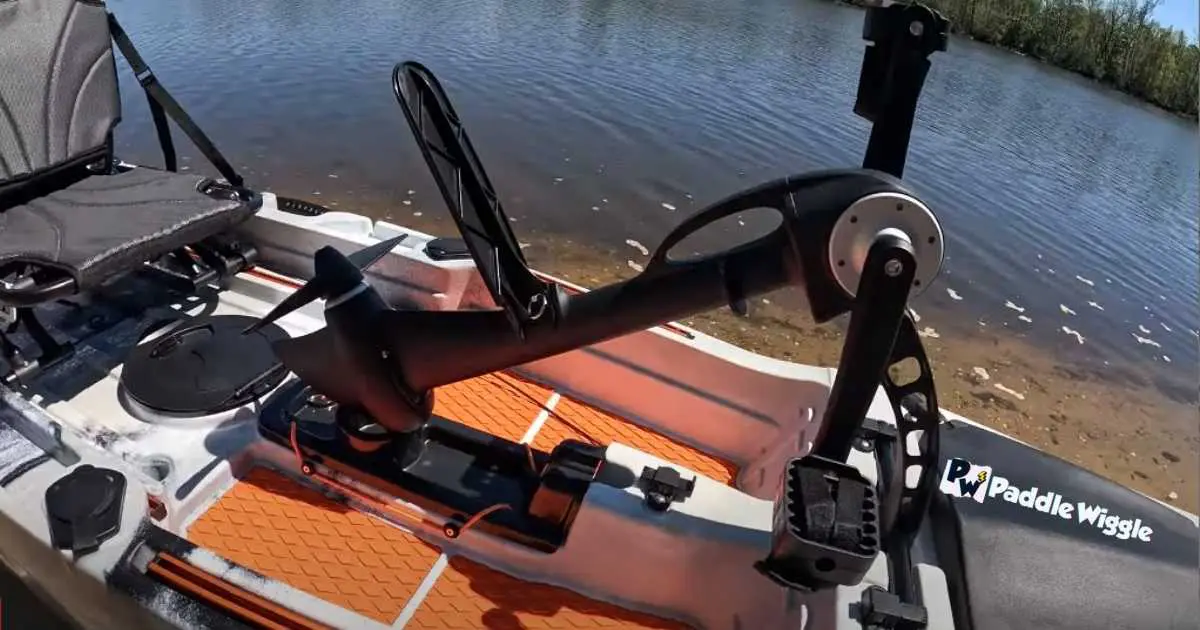

Pedal kayaks are made to be quicker and more efficient than paddle kayaks. With the pedal system, you can make stronger strokes, which means you go faster and get less tired. This really helps when you’re going long distances or kayaking in tough conditions like strong currents or winds.
Fishing Efficiency
Pedal kayaks are great for fishing because they offer some big advantages. Since you pedal instead of paddle, your hands are free for casting, reeling in fish, and handling gear. This lets you focus more on fishing without worrying about steering the kayak.
One thing that makes pedal kayaks perfect for fishing is that you can use them hands-free. You can move forward or backward just by pedaling, so you don’t have to put down your fishing rod. This makes it easier to navigate and position yourself in the best spots for fishing.
People who’ve tried pedal kayaks for fishing say they catch more fish. Being able to stay still while casting or trolling is really helpful. Plus, pedal kayaks are quiet, so they don’t scare fish away as easily, giving you a better chance of catching something.
Enhanced Stability
Pedal kayaks are known for their impressive stability, especially when compared to traditional kayaks. Their design features a wider hull and a lower center of gravity, which helps them stay steady even in rough waters or when faced with boat waves.
The enhanced stability of pedal kayaks allows for a more comfortable and secure experience while out on the water. Anglers can confidently stand up and cast without worrying about tipping over. This is especially beneficial when fishing in areas with rougher conditions or when battling larger fish that may try to pull you off balance.
Compared to regular kayaks, pedal kayaks have a wider beam and overall design that offers better stability. This makes them a great choice for beginners who might be nervous about staying balanced in different water conditions.
Spacious Legroom
One notable advantage of pedal kayaks is the spacious legroom they provide. In traditional kayaks, your legs might feel cramped, causing discomfort, especially during long trips. But with pedal kayaks, there’s plenty of room for your legs, making the experience much more comfortable and enjoyable.
The extra legroom lets you stretch out and find a comfy sitting position. And it’s super important during long fishing trips or when you’re out on the water for a while. Being more comfortable not only helps you feel less tired but also keeps your blood flowing better, so you can stay out longer without feeling restless.
Compared to regular kayaks, where foot braces or bulkheads can limit your leg space, pedal kayaks give you more freedom to move around. This makes them more comfy and flexible, which makes kayaking even better overall.
How To Enhance The Speed Of A Pedal Kayak
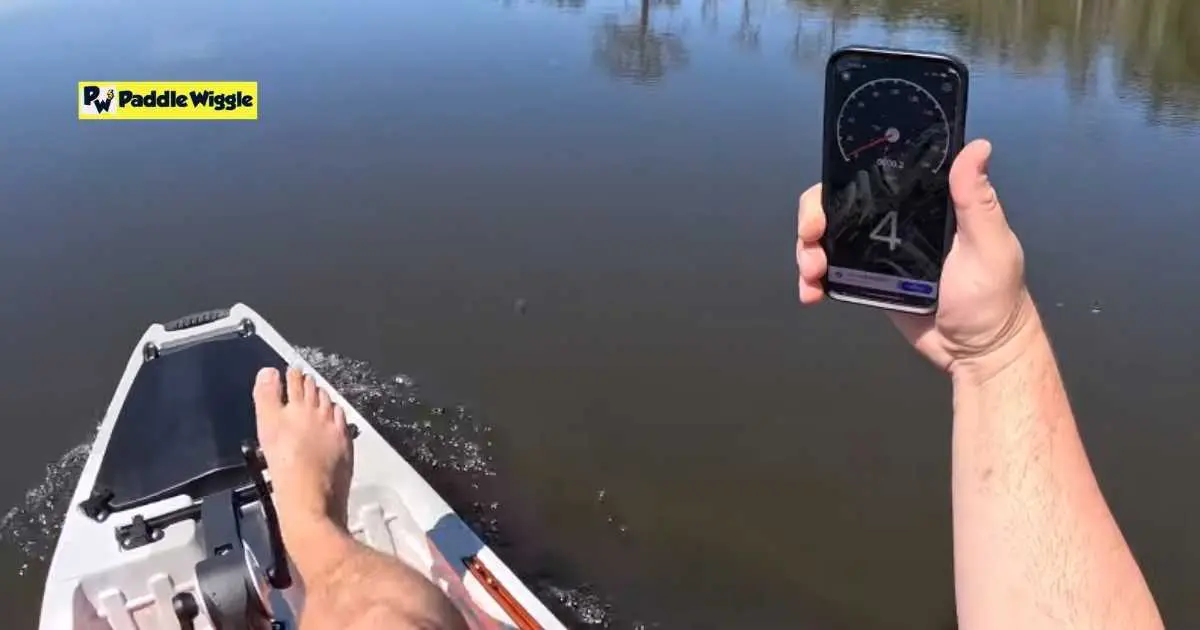

When it comes to enhancing the speed of a pedal kayak, several strategies and modifications can be implemented. These tips and techniques can help you maximize your speed and efficiency on the water, allowing you to cover more distance in less time.
Technique Improvement
Improving your pedaling technique is another effective way to enhance the speed of your pedal kayak. By refining your technique and avoiding common mistakes, you can maximize your efficiency on the water.
One important aspect of the pedaling technique is maintaining a smooth and consistent motion. Avoid jerky movements or pedaling too forcefully, as this can disrupt the flow of water around your kayak and slow you down. Focus on maintaining a steady rhythm and applying consistent pressure with each pedal stroke.
Another key technique for improving speed is proper body positioning. Position yourself in the center of the kayak to maintain balance and stability. Keep your back straight and engage your core muscles to generate more power with each pedal stroke. By using your entire body rather than just your legs, you can achieve greater speed and efficiency.
Practice is crucial for improving your pedaling technique. Dedicate time to regularly paddle your pedal kayak and experiment with different techniques. Pay attention to how different adjustments affect your speed and overall performance. By practicing regularly, you can fine-tune your skills and become more proficient at pedaling a kayak.
Gear Upgrades
To enhance the speed of a pedal kayak, there are several gear upgrades that you can consider. These upgrades can help optimize your kayaking experience and make your pedal kayak faster and more efficient.
If you want to make your pedal kayak faster, a key upgrade is getting a top-notch propeller. A better-designed propeller made from quality materials can really amp up your propulsion efficiency, making it easier to move through the water. Make sure to search for propellers made specifically for pedal kayaks, as they’re crafted to give you the best speed and performance possible.
If you’re looking to boost the speed of your pedal kayak, consider switching to a lighter paddle. A lightweight paddle helps decrease the kayak’s overall weight, making it easier to handle and improving your paddling efficiency. Look for paddles crafted from lightweight materials like carbon fiber or fiberglass for the best results.
In addition to propellers and paddles, various accessories are available that can improve the speed and performance of your pedal kayak. One such accessory is a rudder system. A rudder helps with steering and tracking, allowing you to maintain a straight course while minimizing drag. By reducing drag, a rudder system can contribute to increased speed and improved overall performance.
Moreover, getting a kayak sail can give you an extra speed boost when the wind is in your favor. The sail catches the wind’s power, pushing your pedal kayak forward without needing to pedal as much. This comes in handy when you’re looking to save energy or make the most of tailwinds.
Upgrade To A Lightweight Kayak
The weight of your kayak can significantly impact its speed and maneuverability. Consider upgrading to a lighter model that is specifically designed for speed. Look for kayaks made from lightweight materials such as carbon fiber or fiberglass. These materials not only reduce weight but also increase overall durability.
Fine-tune the kayak’s hull design.
The shape and design of the kayak’s hull can greatly affect its speed and stability. Look for kayaks with sleek, narrow hulls that minimize drag and resistance in the water. Additionally, consider models with a V-shaped hull or a flat bottom, as these designs can enhance speed and improve tracking.
Add A Rudder System
Adding a rudder system to your pedal kayak can make a big difference in how well it moves. The rudder helps with steering and keeping your kayak on the right path, which means you don’t have to paddle as hard to stay straight. This comes in handy, especially when you’re dealing with winds blowing from the side or strong currents.
Use hydrodynamic accessories
Hydrodynamic accessories can boost your pedal kayak’s speed even more. Keel strips or hydrofoils help cut through the water smoothly and make your kayak more stable. They’re simple to attach and can really improve your kayak’s performance.
Final Words
In summary, pedal kayaks outpace paddle ones in speed. The built-in pedal system allows for quicker and more efficient movement compared to paddling. Using larger leg muscles helps maintain power and reduces tiredness during longer trips. This, combined with the continuous motion of the pedals, leads to a faster and more pleasant kayaking journey. So, for those prioritizing speed and efficiency, pedal kayaks are definitely the way to go.



